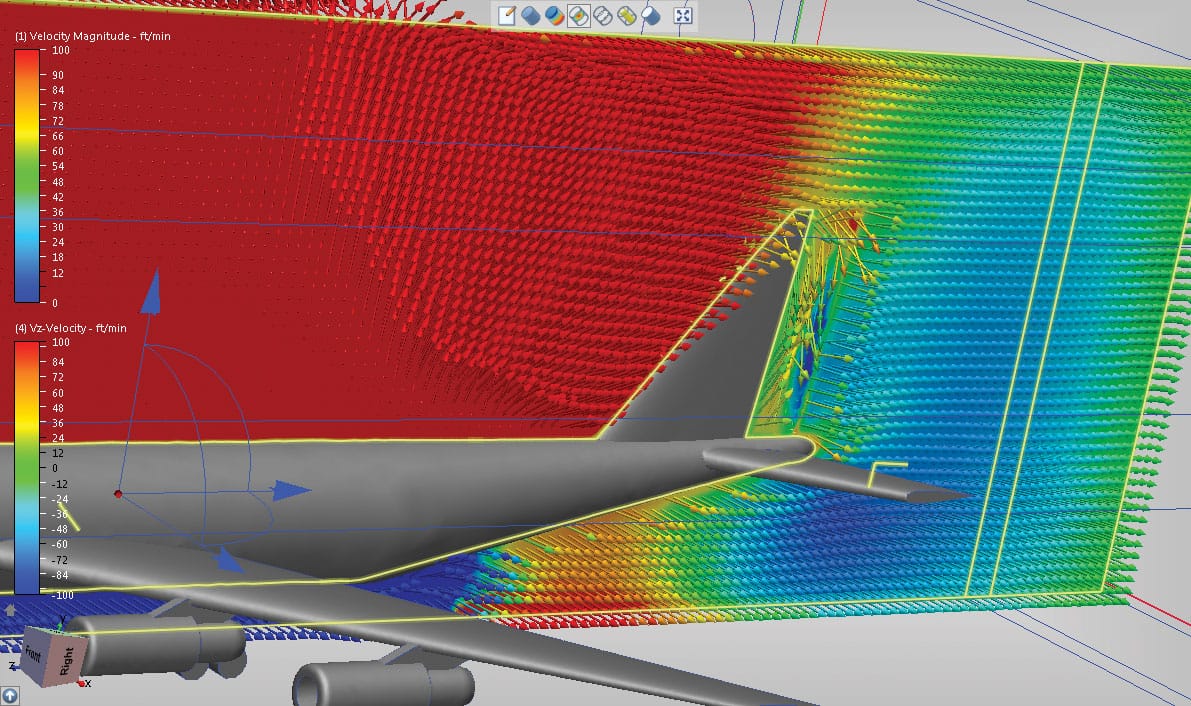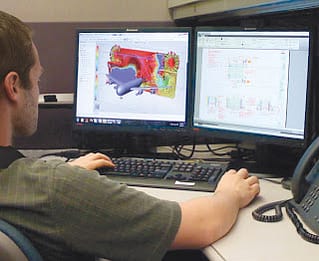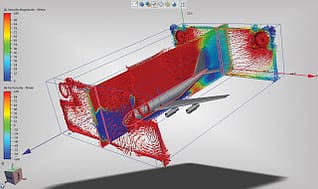

Computational Fluid Dynamics (CFD) software does just that, and we were excited to sit and talk with the GFS Engineering Team about how the software works in the GFS paint booth design process.
GFS: Can you give us a general idea of what computational fluid dynamics software is, and why it’s important?

First, we can quickly determine if there are any potential airflow issues very early in the design process, dramatically saving time and money. The second advantage is its usefulness as a research tool. Multiple new concepts can be quickly modeled and tested to determine validity and verify the best option to meet a particular set of performance needs.
GFS: That sounds very tricky.
ET: It is rather simple to run the software simulation itself, but the real skill comes in to play when examining the data and analyzing the results. It takes a great deal of training and expertise to accurately interpret the data, realize how it impacts the designs, and determine what you need to do about it.
GFS: So can you walk us through a typical CFD scenario?
ET: It always starts with building a CAD model of the booth. This model is then imported in to the CFD software, and you assign what are known as ‘airflow regions’ to various elements of the CAD model. Essentially this tells the CFD software which areas of the booth the air will flow through, and in which order. Once this is complete, the software then runs the simulation until the system reaches ‘convergence’, which is the term used to describe the booth’s ‘steady state’ of operation where airflow speed and temperature reach their set points.
GFS: How long does the simulation take to run?

We hope you’ve found this look at fluid dynamics in paint booth design interesting! If you have any questions about this unique software, or any other questions about GFS paint booth design, drop us a line at [email protected] and we’d be happy to answer them for you.
One of the best ways to highlight your business is through a story that you can share across your online platforms. It humanizes your business and shows that your business can make a meaningful impact. Your testimonial would be used as a project profile on the GFS Booth Blog and can be shared on your website and/or social media channels.
Complete this form and we’ll be in touch to showcase your company.

Shop a variety of GFS aftermarket products, including booth protection products and mobile accelerated curing units. And enjoy the convenience of fast and free ground shipping throughout the contiguous United States.

Located at GFS’ headquarters in Osseo, Wisconsin, the Center for Excellence is an innovative facility featuring an automotive refinish training center, as well as a separate space dedicated to technical product training.

GFS is continuously searching for talented, ambitious individuals to join our team. We aim to provide our employees with every opportunity to make an impact on the company and find their niche along the way — weather in a production, field services or an office position.